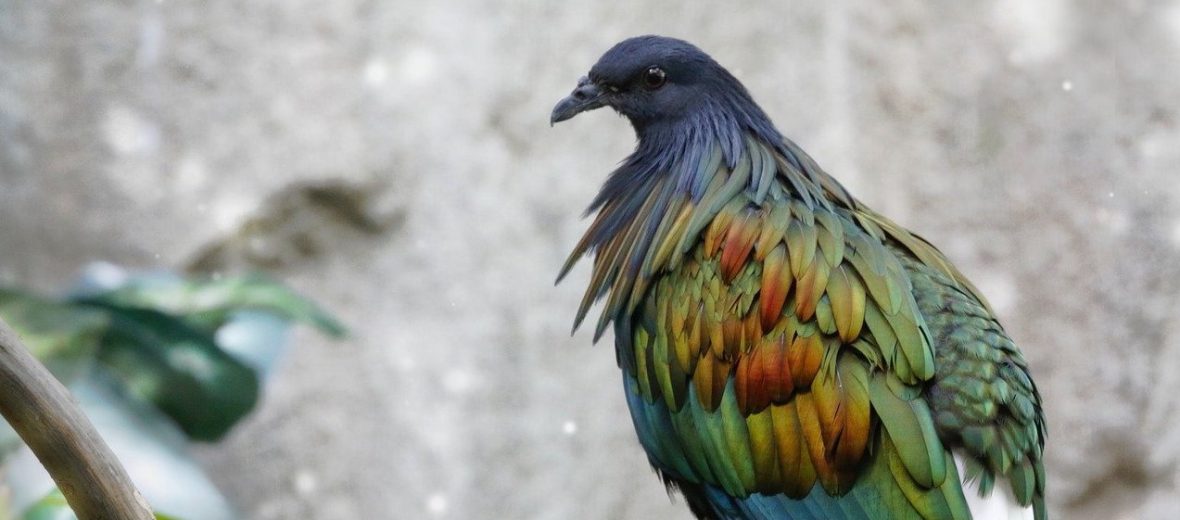
The Nicobar pigeon, aka Nicobar dove, hackled pigeon, white-tailed pigeon, or vulturine pigeon, hails from South East Asia and Oceania. They prefer dry forests, mangroves, rainforests, and shrubland habitats. Due to habitat loss at the hands of agriculture; hunting; trapping; and invasive species (and with them disease, predation, and competition for food), these beautiful birds are listed as Near Threatened by the IUCN. Their populations are also decreasing.
First the Stats…
Scientific name: Caloenas nicobarica
Weight: Up to 21 ounces
Length: Up to 16 inches
Wingspan: Up to 23 inches
Lifespan: Up to 15 years
Now on to the Facts!
1.) These birds are the closest living relative of the now extinct dodo.
2.) They lead a nomadic lifestyle and regularly fly from island to island.
3.) Nicobar pigeons are crepuscular (active at dawn and dusk).
4.) Even though they can fly very well, they spend most of their time on the forest floor, looking for food.
5.) When flying, they take on a single file or column array, unlike other pigeons that fly in more of a crowd.
But wait, there’s more on the Nicobar pigeon!
6.) A group of pigeons is called a flight, kit, loft, band, dropping, passel, or plague.
7.) These pigeons are very vocal and emit a lower-pitched repetitive type of call.
Did you know…?
The Nicobar pigeon is the largest known living pigeon in the world.
8.) Their diet consists of buds, fruit, seeds, and the random insect.
9.) Nicobar pigeons are believed to be monogamous (mate for life).
10.) Females lay a single egg that both parents incubate for up to 2.5 weeks.
But wait, there’s still more on the Nicobar pigeon!
11.) While drinking, these birds will put their beak in the water and suck the water up, rather than sipping it, like other birds do.
12.) In the wild, these birds shy away from contact. However, in captivity, they are very excepting of human contact.
13.) When threatened, Nicobar pigeons produce a grunting sound that sounds like a pig.
Now a Short Nicobar Pigeon Video!
Be sure to share & comment below! Also, check out the Critter Science YouTube channel. Videos added regularly!
Want to suggest a critter for me to write about? Let me know here.
Some source material acquired from: Wikipedia & IUCN



